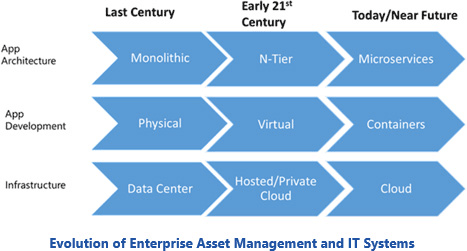




This Selection Guide includes both selection criteria and strategies for choosing the best enterprise asset management software supplier to meet your business needs.
The scope of the criteria covers key aspects of Enterprise Asset Management (EAM) systems including asset information management, work order management, materials management, labor management, service contract management, financial management, reporting, and technology architecture. As you will see below, this guide includes insight into expanded EAM capabilities needed by today’s digital-savvy organizatiosn to better leverage their digital transformation efforts. Examples include such areas as expanded deployment options, open APIs and expanded connectivity and interoperability, edge computing, IoT, and predictive analytics. The guide has attributes tailored for industrial organizations, and allows those involved in an enterprise asset management selection process to make improved decisions more quickly.
The key metrics for maintenance managers involve uptime, asset longevity, cost control, and safety across a diverse set of assets and technologies. To meet these critical objectives, executive management recognizes the requirement for a modern and reliable EAM system. In addition, the EAM system needs to integrate with other systems including condition monitoring and corporate finance. The improved economy has unleashed a backlog of projects for new EAM systems among industrial organizations. To support the growing demand for help with supplier selection, ARC created the EAM Supplier Selection Guide.
EAM system selection is mission critical particularly in the asset-intensive industries. The total solution has become complex and functionality involves the combination of an expanded range of capabilities and specific technology requirements. While product plays a major role, suppliers have specific domain expertise, geographical presence, and knowledge of certain industry dynamics. These must all be evaluated in a supplier selection process. [ Learn more about Enterprise Asset Management. ]

The following are a few of the strategic issues specifically covered in the Field Service Management Software Selection Guide:
With poor maintenance, production equipment fails – usually while in use and most inconveniently. This interrupts production, causing losses in direct labor and, often, work-in-process materials. These losses have a direct negative impact on the P&L statement. With today’s tight scheduling with minimal inventory, an interruption also causes missed shipment dates, customer satisfaction issues, and reduced revenues. Avoiding unplanned downtime not only improves financial and operational results, it also elevates vendor and customer relationships.
Well-executed maintenance programs allow assets to be more reliable and last longer. A lack of proper maintenance activities can result in excessive wear and tear, which contributes to premature overhauls or replacement of equipment.
On the other hand, proper maintenance improves the reliability and longevity of assets, delaying the need for costly capital projects for equipment replacement. Thus, proper maintenance available with next-gen EAM systems can delay new capital expenditures and help conserve capital. Also, increased uptime provides additional production capacity, often helping defer the need to procure more equipment as the business grows.
Unfortunately, about half of EAM work orders are printed, activity handwritten by the technician in the field, and data entry is done later by a clerical person – a process prone to data quality problems and outdated information that undermines trust in the system. Handheld mobile devices have high interest for adoption, but many organizations struggle with the financial justification. Handheld smart devices have grown in capability with technologies like global positioning system (GPS), geographic information system (GIS), radio frequency identification (RFID), and embedded cameras. Also, instruments with Bluetooth allow for more automated data collection. In addition to improving data quality, these mobility capabilities enable more powerful applications, improved business processes, and business value.
ARC has been researching the EAM market for decades and we know the issues:
This ARC Selection Guide will help you select the best available EAM system to meet your needs now and in the future.
For more information on this technology guide or to discuss how we can help you, please contact us.




